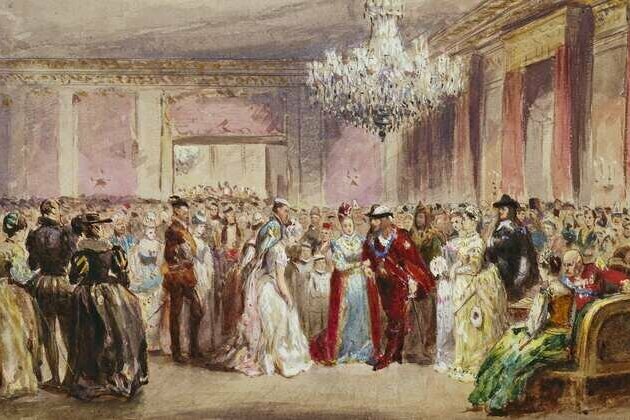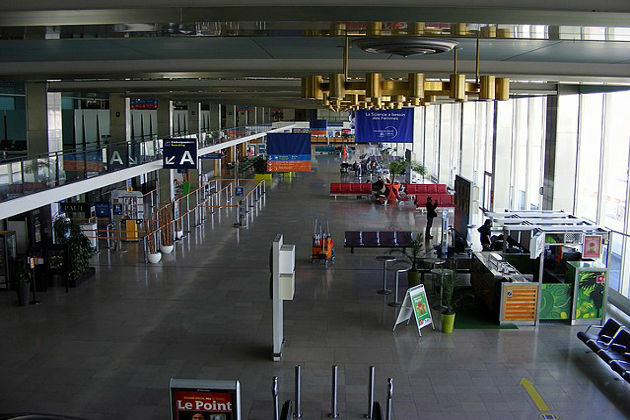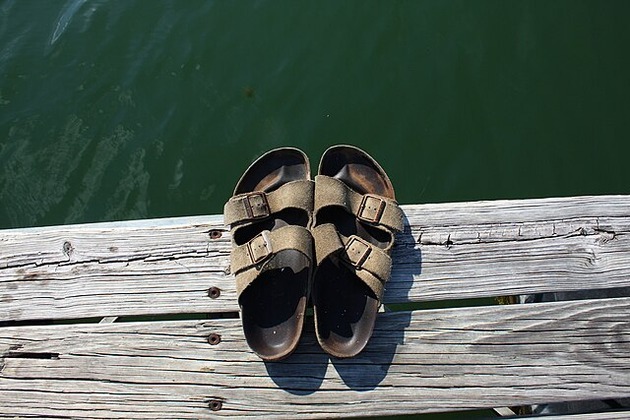The Edwardians: Age of Elegance - a glimpse into royal patronage of the arts in the early 20th century
The Conversation
08 Jul 2025, 17:11 GMT+10

King Edward VII, the son of Queen Victoria, ascended the throne upon her death in 1901, but unlike his mother, he ruled for a very short period and died in 1910. His reign, along with the years immediately before the outbreak of the first world war in 1914, are known as the Edwardian period.
Taking in this particular era, The Edwardians: Age of Elegance at the King's Gallery in Buckingham Palace, focuses on the artistic patronage of Edward VII and his wife Alexandra of Denmark, and their son George V and his wife Mary of Teck.
Looking for something good? Cut through the noise with a carefully curated selection of the latest releases, live events and exhibitions, straight to your inbox every fortnight, on Fridays. Sign up here.
Edward and Alexandra were married in 1863, and as Prince and Princess of Wales the pair were leading tastemakers in Victorian upper-class society in the years before Edward came to the throne at the beginning of the 20th century.
This is often regarded as a golden age before the carnage and disruption of the great war saw the world indelibly change. However, the exhibition is not confined to these years and also reaches back into the Victorian period (1837-1901).
Those hoping to experience some of the glamour of the royal family won't be disappointed. The first room takes visitors into the heady atmosphere of the Marlborough House set which centred around Edward and Alexandra's residence in St James's. One case commemorates the 1871 Waverley Ball which marked the centenary of popular Scottish novelist Sir Walter Scott. Alexandra's elaborate Mary Queen of Scots costume - a silk dress with gold lacings - is on display.
The pageantry of the court is communicated through a series of stunning narrative paintings including the Danish artist Laurits Tuxen's The Garden Party at Buckingham Palace (1897-1900) and The Family of Queen Victoria in 1887 (1887) painted for her golden jubilee in 1887.
This theme is picked up in the second large room, which focuses on the lavish world of the court. Here, the opulent 1911 coronation robes of George and Mary and a case of necklaces and jewellery take centre stage. This exhibit is the star of the show with plenty of visitors posing for photographs in front of it.
But beneath all the glitz and glamour there's a subtler story about how the royal family worked as collectors and their wider role in Britain and beyond. One of the most interesting things about the exhibition is that it reveals the personal taste of the royals, through what they chose to collect.
Horses, dogs and yachts are prominent. Edward's dog Caesar, the wire-haired fox terrier who famously followed his funeral procession in 1910, appears in several images, and his race horse Persimmon is also represented.
Edward and Alexandra were patrons of leading artists of the day - he owned a number of works by the popular Victorian painter Frederic Leighton, while she collected art by the Pre-Raphaelite artist Edward Burne Jones. Alexandra also supported Minton's pottery studio in the 1870s, which employed many women artists.
The exhibition also reveals Alexandra's personal artistic activities. Like many upper-class Victorian women, she was a keen photographer and creator of photo albums. In the second half of the 19th century, album-making offered women an outlet for creativity and emotional expression. An album of designs made by Alexandra in the 1860s features photos arranged in a spiders web, with family and friends transformed into butterflies and insects.
Royal patronage was often about international connections. Alexandra's Danish heritage is expressed through pieces from the Royal Copenhagen porcelain manufacturing company, including a massive porcelain cabinet, featuring an ornamental roof topped by a group of dancing monkeys surrounding a large swan.
A larger room is devoted to objects amassed on visits and through diplomatic exchange with the colonies which at the time included India, part of Africa, Australia, Canada and New Zealand. Increasingly speedy travel networks brought the world closer in the late 19th century and the royal family were able to travel further and more frequently than ever before. These visits played an important role in Britain's imperial identity, and underlined the nation's global power.
Between 1875 and 1876 Edward toured India. This trip produced a dazzling array of diplomatic gifts, such as a case filled with ornately decorated Indian weapons. After the visit Edward created a special Indian room for them at Marlborough House. Today, they sparkle in their cabinet for the exhibition's visitors.
The exhibition does a good job of revealing the importance of imperial connections to the royal collections and the role of the royals in the larger colonial project, but in places I would have liked to know more about the stories behind these objects.
There's a tension between the precise attribution of the work of British and European artists and the objects that have been gifted from the colonies - almost all labelled "unidentified maker".
The absence of such information is the product of longstanding curatorial habits that shaped these collections in the past and continue to determine what we know about them today. This does mean that there are some absences about the origins and makers of these things, which could have been acknowledged more in some of the exhibition text.
This was particularly evident when looking at a large portrait of the Maori dancer Terewai Horomona by Gottfried Lindauer. The image has an elaborate frame with a plaque declaring it was presented to the Prince of Wales by the New Zealand commissioner for the Colonial and India Exhibition, 1886.
The commentary states that Edward was "enchanted" with the portrait which was "promptly gifted" to him. But this might have been better used as an opportunity to give some thought to the woman whose image was framed, presented and exchanged.
Overall, though, this is an enjoyable exhibition that reveals the royal social world, patronage and imperial connections, and tells a fascinating story about the artistic taste and activities of the lesser-known monarchs of the early 20th century.
 Share
Share
 Tweet
Tweet
 Share
Share
 Flip
Flip
 Email
Email
Watch latest videos
Subscribe and Follow
Get a daily dose of Massachusetts Sun news through our daily email, its complimentary and keeps you fully up to date with world and business news as well.
News RELEASES
Publish news of your business, community or sports group, personnel appointments, major event and more by submitting a news release to Massachusetts Sun.
More InformationInternational
SectionU.S. Treasury Secretary says Musk should steer clear of politics
WASHINGTON, D.C.: Elon Musk's entry into the political arena is drawing pushback from top U.S. officials and investors, as his decision...
TikTok building U.S.-only app amid pressure to finalise sale
CULVER CITY, California: TikTok is preparing to roll out a separate version of its app for U.S. users, as efforts to secure a sale...
Trump defends use of 'Shylock,' citing ignorance of slur
WASHINGTON, D.C.: President Donald Trump claimed he was unaware that the term shylock is regarded as antisemitic when he used it in...
Summer travel in chaos as French air traffic controllers walk off job
PARIS, France: A strike by French air traffic controllers demanding improved working conditions caused significant disruptions during...
Congress weighs Medicaid cuts, sparking alarm in small-town hospitals
OMAHA, Nebraska: With Congress considering cuts totaling around US$1 trillion to Medicaid over the next decade, concerns are rising...
Gas station blast injures 40 in Rome, kids narrowly escape
ROME, Italy: Quick thinking by emergency responders helped prevent greater devastation after a gas station explosion in southeastern...
Business
SectionBeijing blamed for covert disinformation on French fighter jet Rafale
PARIS, France: French military and intelligence officials have accused China of orchestrating a covert campaign to damage the reputation...
Birkenstock steps up legal battle over fakes in India
NEW DELHI, India: Birkenstock is stepping up its efforts to protect its iconic sandals in India, as local legal representatives conducted...
Beijing hits back at EU with medical device import curbs
HONG KONG: China has fired back at the European Union in an escalating trade dispute by imposing new restrictions on medical device...
Wall Street reels after Trump invokes new tariffs
NEW YORK, New York - Monday's trading session saw mixed performances across U.S. and global markets, with several major indices posting...
Trump admin allows GE to restart engine sales to China’s COMAC
WASHINGTON, D.C.: The U.S. government has granted GE Aerospace permission to resume jet engine shipments to China's COMAC, a person...
Saudi Aramco plans asset sales to raise billions, say sources
DUBAI, U.A.E.: Saudi Aramco is exploring asset sales as part of a broader push to unlock capital, with gas-fired power plants among...













